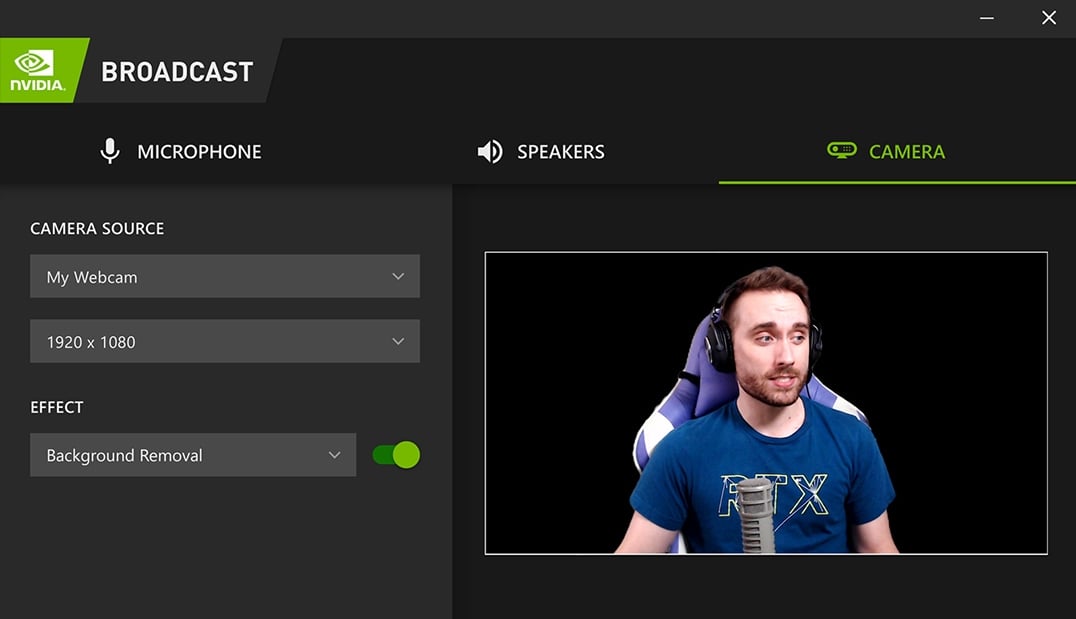

- #NVIDIA BROADCAST VS RTX VOICE HOW TO#
- #NVIDIA BROADCAST VS RTX VOICE SOFTWARE#
- #NVIDIA BROADCAST VS RTX VOICE WINDOWS#
But it was the one feature I looked forward to more than ray tracing and even DLSS. Of course, it was going to be far from perfect, especially with less-than-ideal lighting. As for the speaker noise removal, my audio output is fine, so there’s no need for that. In any case, I’m no longer using the noise removal feature on NVIDIA Broadcast because it’s “too good” when I have the noise removal on max and not good enough when it’s anywhere lower than max.
#NVIDIA BROADCAST VS RTX VOICE WINDOWS#
It’s like it doesn’t work enough in Normal priority since it’s a background process and Windows normally prioritizes foreground processes. bat file that opened it in Above Normal process priority because it actually adds more distortion and noise when it’s on Normal priority. Perhaps in the future, as I try to learn more about making music (because it’s hard to find royalty-free music that I like), maybe I’ll learn that too.Īlso, back when I was using the separate RTX Voice, I had to create a. I’m neither a musician, music producer, nor audio engineer, so I don’t have the requisite knowledge to parse through that. I’ve tried following tutorials for VST, and they’re too complicated for me. I can try setting up a VST on Voicemeeter Banana, the program I use to balance my inputs and outputs. I recently had to do a voiceover gig, and I had to record it on OBS Studio.

#NVIDIA BROADCAST VS RTX VOICE HOW TO#
The only problem with Speex is that it’s only on OBS Studio, so I don’t know as of right now how to embed it on other programs as well. The former is less stringent than the latter, and I find myself using it more than the supposedly better filter for the same reason I stopped using RTX Voice, which was that it removed too much noise and introduced a significant amount of distortion.Īll I need is to remove background noise like my air conditioning and the traffic outside, especially when there are fire trucks and ambulances passing by. There are two of them - Speex and RNNoise. I then learned about the noise removal filters in OBS Studio. (I can’t embed the video because it’s age-restricted. Like in this video, it garbles anything that isn’t in the same profile and decibel range as your normal voice, even if it’s you shouting. However, like I said, it may be too good at what it does, to the point that it will reject anything that doesn’t even remotely sound like a human voice. That video of it being tested while the guy testing it banged a hammer on his table and lifted a fan to the mic was the best possible way to showcase its effectiveness. When RTX Voice was first revealed, it was a game changer. I ended up not using the noise removal, but I do use the background blur. Now that I have an RTX card, an MSI RTX 2070 Super Gaming X Trio I bought from my friend, I got to try out the whole NVIDIA Broadcast suite after a few failed attempts at installing it. While the camera background removal feature definitely needed an RTX card, the sound noise removal only needed a recent GTX card.
#NVIDIA BROADCAST VS RTX VOICE SOFTWARE#
Meanwhile, I coveted the NVIDIA Broadcast software that the RTX Voice got integrated in. I wrote about it here, and I was quite amazed with it at the time. I’ve been using RTX Voice for quite a while since it first got popular. It’s good at what it does, but perhaps it’s too good. But now that I actually have an RTX card to use it with, I’ve been somewhat disappointed with it.


You can remove noise from your microphone and speakers like magic and remove the background on your webcam like you’re living in a green screen void. NVIDIA Broadcast is great, for the most part.


 0 kommentar(er)
0 kommentar(er)
